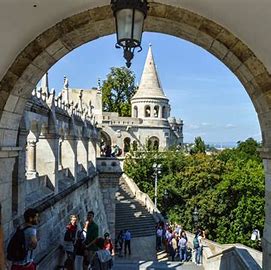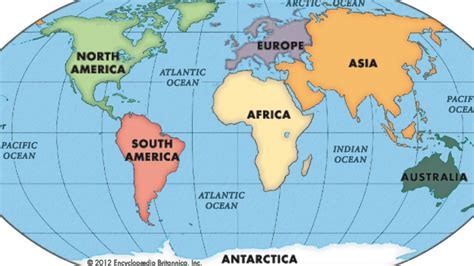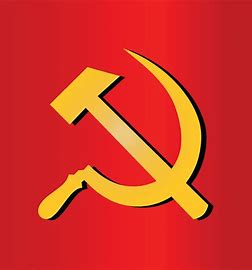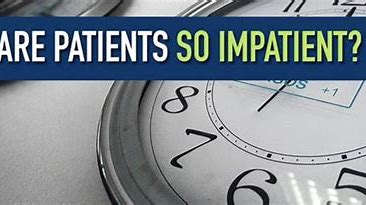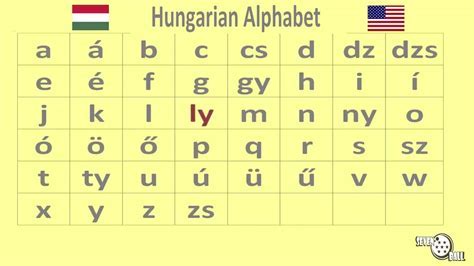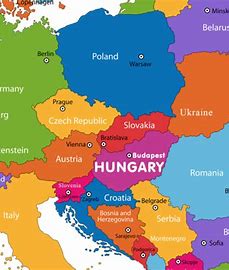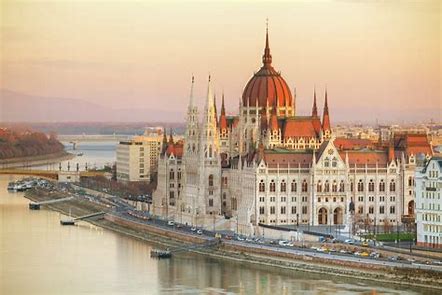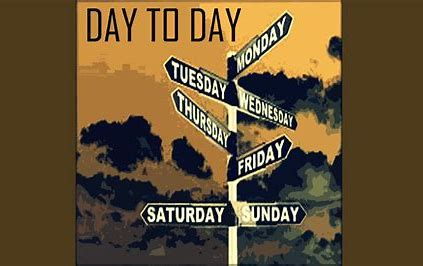Continued from # Post 2497
My first long car ride was a miserable experience, as motion sickness ruined the drive from the airport to our home the day I first arrived in America. We made several “emergency” stops along the way. I can still remember cars and tanks burning on the streets of downtown Pest, so it’s a wonder why I became so attracted to them. I’m not even sure why I was interested in going to the Indianapolis 500 when we lived in Indianapolis, however, that had to have been what further stirred my interest in the sport and the cars on the track. I was naturally curious as to the automobile’s history in Hungary.
I refer to a Dailynewshungary.com article that begins by explaining, “some original car production in the Hungarian part of Austro-Hungary at the beginning of the 20th century was lost. Most cars and trucks were imported from the Soviet Union and some other countries. Hungary itself produced a small number of heavy trucks (Rába). The country also specialized in the manufacture of buses (Ikarus). The Ganz Works, a long lived Hungarian company, has been manufacturing engines and wagons that are specialized for electric railway equipment.”
The dump truck that Bela stole for the escape was probably built by Rába. The company was founded by local investor groups in Győr in 1896. 1904 marked the start of production for their first petrol engine powered trucks. Throughout the years, they have become an important provider to Hungarocamion, a publicly operated international trucking firm. As far as cars, the Rába was a Hungarian automobile manufactured from 1912 to 1914. Soon after, the company began to produce its first passenger automobiles: The RÁBA Alpha, along with cars of other licenses, including Benz, Panhard, and Austro-Daimler. The diverse company also makes railroad passenger carriages, city tramcars, and agricultural vehicles like Rába tractors. Although they are no longer in the car business, they Rába has grown to be Hungary’s third largest employer.
Here are eight other cars that were designed, built, or assembled by Hungarian people:
-
Few are probably aware that József Galamb, a Hungarian engineer, helped develop the world-famous Ford Model T.
-
According to the magazine Vezess, the very first “truly” Hungarian car was named after its creator, János Csonka back in May of 1905 and tested at the University of Technology and Economics. “Its engine was a four-cylinder, four-stroke water-cooled design with a transmission attached to it.”
-
Hvg reports that the Brokernet Silver Sting was the first domestic racing car to be designed and built entirely in Hungary with the help of Hungarian experts, but only two were made, using Kevlar, titanium, carbon fiber, and composite materials.
-
The Hódmezővásárhely Agricultural Machinery Manufacturing Company is associated with the production of the electric-powered small car named ‘Puli’. The chassis made of fiberglass plastic, won awards but have since disappeared from the roads, as if there were many made to begin with.
-
The roadster Borbála, named after the daughter of the designer, lacked a door and was the star of the 1989 Hungexpo.
-
The 1995 Alma was a convertible with a refurbished Fiat 127 engine. Actually, the only part made in Hungary was the fiberglass body.
-
The Brokernet Silver Sting is powered by a 437-horsepower, 3.6-liter, six-cylinder engine that was developed from the Porsche 911 GT3 engine.
-
The Esztergom-made S-CROSS was the grand winner of “Hungarian Car of the Year 2023”.
Hungary has been a part of Formula 1 since 1986 and has seen only one driver race under the red, white, and green colors of their flag. There are very names that come to mind, although there are a number of up-and-coming Magyar men and women in the sport.
Ferenc Szisz was the first Hungarian race car driver and the winner of the first Grand Prix motor racing event on a Renault Grand Prix 90CV on June 26, 1906. More recently, Zsolt Baumgartner, who was born on January 1, 1981 in Debrecen, Hungary has a single point scored in his Formula 1 career. Zsolt began racing competitively at the age of thirteen karting in Hungary in 1994.
Laszlo Toth who was born on June 2nd, 2000, in Telki Hungary, most recently competed for ARC Bratislava in the 2023 Asian Le Mans Series. In 2022, he drove for Charouz Racing System in the FIA Formula 3 Championship. Toth, like Baumgartner, began karting at age thirteen in 2013. In 2021 the Hungarian joined Campos Racing in Formula 3 and in seventeen attempts failed to score. He had previously competed in the Italian F4 Championship, ADAC Formula 4 and Formula Renault Eurocup. The prior year, Toth raced for Bhaitech in Formula Renault Eurocup, still not winning but scoring some points along the way.
I’ve been to six Formula One events, Phoenix, Austin and four in Montreal, but never got back to see the Hungarian Grand Prix (Magyar Nagydíj) for the inaugural 1986 race or any subsequent years. This was the first Formula One race to take place behind the Iron Curtain, a major coup by organizer Bernie Ecclestone. The race drew 200,000 spectators despite expensive ticket prices. My cousin, Tibi, a big fan of the sport, could not afford to go. Locals made up only about ten percent of attendees, while the Finns and Germans are the majority of the crowd. The twisty, Hungaroringin Mogyoród near Budapest is the race site.
Ecclestone was also being creative when he took F1 to the flat streets of Phoenix in 1989. I was there on Safeway business and bought a ticket, thinking it was a long way from Phoenixville to Phoenix. It was my first, followed by Austin’s more challenging climbs and turns. A business associate, Joe Gunn, and I then took the “Griswold Hauler” to Montreal and stayed in a bed & breakfast. The following year, he ushered us there in style in his new BMW. The other two years, Jill arranged for tickets through Tony and Peter, the brother owners of La Campagnola Restaurant, one of several they operated. The walls of their pizza place in downtown Shamong were decorated with Formula One lithographs.
The artist turned out to be a friend of theirs, and they let Jill choose from a book of options. The signed, framed print she selected for me was of the 1989 Hungarian Grand Prix with my two favorite F1 drivers, Nigel Mansell passing Ayrton Senna for the win. It proudly hangs in my office. As it also so happened, the brothers were about to open a Canadian restaurant and planned on taking a group of 25 to Montreal for the race. I was able to buy tickets for that Formula One race two consecutive years where they provided VIP transportation and lodging.
Since we moved to Florida, I’ve been to two major tracks, and watched a fellow sports car owner race his Porche on a make-shift airport course. Some neighbors went with me to the St. Pete Indycar Grand Prix two years in a row and we drove the Miata to Sebring for a SCCA event on that famous track in conjunction with the car club. There were just too many Miata’s on the course that chilly day to make it competitive. The streets of St. Petersburg did make for some interesting racing. Mario Andretti drove the pace car and we hooked up with Bitcoin driver Conor Daly, his mother, Beth, and stepfather, Doug Boles, President of the Indianapolis Motor Speedway. The only thing we didn’t get to do was ride on Roger Penske’s yacht parked near the finish line. In the near future, I’d also like to get down to Miami for the FI event. Maybe I’ll win the lottery!
Penske won in St. Pete in 2024, but I was saddled by hip surgery and my neighbor, this book’s ghost writer, was recovering from open heart surgery. The good news is that he had plenty of down time to write. We watched the race together on TV, along with a recorded replay of the Saudi Arabian Grand Prix. Our neighbor’s nephew, Karun Chandhok, was involved in the commentary. Ho…hum, Max Verstappen and Red Bull won again. I guess we could almost say the same thing about Penske’s Josef Newgarden, certainly Roger himself. Conor Daly was not in St. Pete but will drive for Dreyer & Reinbold Racing in Indianapolis, just another race that I’ll have to watch on TV this year. My Indycar favorites, Emerson Fittipaldi and Al Unser, Jr. are now only represented on race day by grandchildren. Let’s face it – I’m getting old.
Due to the nature of the Budapest track, narrow and often dusty because of under-use, the Hungarian Grand Prix is not particularly driver friendly, with sometimes many cars stuck behind each other, unable to pass. Qualifying position and pit strategy are crucial, although the 1989 race saw a bullish performance from Nigel Mansell in the Ferrari, who started from 12th on the grid and passed car after car, finally taking the lead when Ayrton Senna was balked by a slower runner. The circuit was modified slightly in 2003 in an attempt to allow more passing.
In 2020, Lewis Hamilton won the Hungarian Grand Prix for an eighth time, equaling Michael Schumaker’s French Grand Prix record for the most times a driver had won the same Grand Prix. Max Verstappen and Red Bull, who has been recently unstoppable, won the 2022 and 2023 editions. I have until 2032 to get there, and maybe take cousin Tibi, after a recent contract extension for the race.
Historically, back in June of 1936, the very first Grand Prix was held on a 5-kilometre (3.1-mile) track laid out in Népliget, a park in Budapest. “The Mercedes-Benz, Auto Union, and the Alfa Romeo-equipped Ferrari teams all sent three cars and the event drew a very large crowd. However, politics and the ensuing war meant the end of Grand Prix motor racing in Hungary for fifty years.”
Grand Prix racing in Hungary also extends to motorcycles, dating back to between 1988 and 1990 when WorldSBK (World Super Bike) came to the Hungaroring with Fred Merkel winning four of the six races. WorldSBK’s planned 2024 visit to Balaton Park, a newly constructed 4.115 km venue with six right-hand corners and 10 left-hand turns, will mean the circuit would become the second Hungarian track the Championship has visited. “In total, three manufacturers – Honda, Kawasaki, and Ducati – claimed victories in Hungary. Will they be able to add to that total, or will Yamaha and BMW become Hungarian winners?”
I’m, of course, partial to Bayerische Motoren Werke. My godfather’s BMW motorcycle was my very first time riding on any set of wheels. I also associate the sweets and ice cream he used to buy me after sitting in the sidecar on our adventures around Budapest. He would take me back to his machine shop and show me around. It was certainly an influence on my love of engines and everything automotive.
sides his BMW motorcycle, I personally had a 21-year love affair with my 533i automobile. The brand also achieved great success on the British racing scene, including the “Isle of Man TT Races” where they have a rich winning history dating back to 1939 and Georg “Schorsch” Meier in the saddle of a 255 Kompressor. I learned early on that the correct term for a BMW automobile is “bimmer,” while “beemer” and “beamer” actually only refer to a BMW motorcycle.
According to various sources, MotoGP has just announced a plan to bring motorcycle racing back to Hungary by 2025 at the latest. Dorna Sports and the Hungarian Mobility Development Agency (HUMDA) are working together to certify two venues that could soon host some of the most thrilling racing in the world of motorsports.”
Hungarian Heritage:
Unlike the conditions of 1956 under Communist rule, Hungary today is considered to be a middle power on the global stage. They joined NATO in 1999, becoming a formal ally of the United States, and also agreed to be one of ten new states to join the EU in 2004. The country has a high-income economy, and its citizens enjoy free secondary education and access to universal healthcare. “The Hungarian social security system offers protection from sickness, maternity, old-age, invalidity, occupational disease and injury, accidents at work, survivorship, children’s education, and unemployment. All persons who are gainfully employed and those of equivalent status are insured against all risks.” Being “Hungry in Hungary,” is no longer about food but rather about being competitive and getting ahead.
Because I’m so proud of my heritage, please allow me to list some of the more famous Hungarians, who can call themselves Magyar. In my opinion, “the statue committee” should consider more champions on this list other than just Count Béla Lugosi and Imre Nagy. Once again, thanks to Wikipedia for help in compiling and dividing this list into categories:
Hungarian Musicians:
Béla Bartók, considered the greatest Hungarian composer of all time.
Eugene Ormandy, renowned conductor of the Philadelphia Orchestra who developed the “Philadelphia Sound.”
Franz Lehár, musician and composer most well-known for his opera “The Merry Widow.”
Franz Liszt, renowned pianist and composer of more than 700 compositions including The Hungarian Rhapsody.
Gene Simmons, KISS rock-and-roll icon Simmons later changed his name to Eugene Klein, taking his Hungarian mother’s maiden name.
Alanis Morrisette, vocalist, her Hungarian mother’s family was forced to leave the country after the 1956 revolution.
Michael Balzary, better known as Red Hot Chili Peppers’ guitarist Flea.
Hungarian Performers:
Béla Lugosi, actor who will be forever remembered and identified as Count Dracula.
Harry Houdini (born Erich Weisz), world famous magician, illusionist and escape artist.
Michael Curtiz, Hollywood director of “Casablanca.”
Peter Lorre, character actor best known for his roles in “Casablanca” and “Maltese Falcon.”
Zoltán Latinovits, the male lead in over 50 films and countless stage roles.
Katalin Karády, a leading actress in Hungarian movies made between 1939–1945.
Pál Jávor, the country’s first male movie star.
Mari Törőcsik, stage and film actress, appearing in more than 170 films from 1956 to 2020.
Imre Soós, Hungarian actor, mostly known for his roles in communist propaganda films during the 1950s.
Zsa Zsa, Eva and Magda Gabor, Hollywood actresses and socialites who collectively were married 19 times.
Louis C.K., famous comedian, his father’s ancestry is rooted in Mexico and Hungary.
Peter Falk, Columbo, one of TV’s most recognizable detectives.
Goldie Hawn and Kate Hudson, daughter and granddaughter of Jews who escaped Hungary during World War II.
Drew Barrymore, her mother, Ildiko Makó, was born to Hungarian parents in a German refugee camp during WWII.
Tony Curtis, the actor was born Bernard Schwartz
Hungarian Inventors, Designers, & Scientists:
Béla Berenyl, designer of the Volkswagen Beetle.
David Gestetner, inventor of the Gestetner stencil duplicator or mimeograph machine.
Edward Teller, father of the hydrogen bomb.
Ernő Rubik, creator of the Rubik’s cube.
János Irinyi, inventor of the noiseless match.
Imre Bródy, inventor of the krypton electric bulb.
Laszlo Biro, inventor of the ballpoint pen
Calvin Klein, fashion designer whose father, Leo, was actually born in Hungary to Hungarian and Czechoslovakian immigrants.
Paul Erdős, brilliant Hungarian mathematician whose parents were also mathematicians.
Albert Szent-Györgyi, discovered Vitamin C and won the 1937 Nobel Prize.
Sándor Just and Imre Bródy, created the tungsten lamp.
Hungarian Politicians, Leaders, Monarchs and Kings:
Nicolas Sarkozy, the former president of France of Hungarian descent on his father’s side.
Matthias Corvinus, Matthias the Just, the monarch who wandered among his subjects in disguise, he remains a popular hero of Hungarian and Slovak folk tales.
Louis II, King of Hungary, Croatia and Bohemia from 1516 to 1526.
Stephen I, also known as King Saint Stephen.
Miklós Horthy, admiral and statesman who served as the regent of the Kingdom of Hungary during the interwar period and most of World War II.
Imre Nagy, communist politician who served as Chairman of the Council of Ministers (de facto Prime Minister) of the Hungarian People’s Republic from 1953 to 1955.
Gaiseric, also known as Geiseric or Genseric was king of the Vandals and Alans from 428 to 477.
Louis I, also Louis the Great was King of Hungary and Croatia from 1342 and King of Poland from 1370.
Jadwiga, also known as Hedvig was the first woman to be crowned as monarch of the Kingdom of Poland.
Árpád, was the head of the confederation of the Magyar tribes at the turn of the 9th and 10th centuries.
Andrew II, also known as Andrew of Jerusalem, was King of Hungary and Croatia between 1205 and 1235.
Hungarian Olympians:
Hungary first competed in athletics at the inaugural 1896 Olympic Games, with 3 athletes competing in 5 events and winning a silver and two bronze medals. The nation’s first gold medal in the sport came in 1900, with Rudolf Bauer‘s victory in the discus throw.
Hungarian athletes have won a total of 511 medals at the Summer Games and 10 medals at the Winter Games, with fencing being the top medal-producing sport. They also love being in the water and expect to win in competitions like swimming, water polo, kayaking, and canoeing.
Aladár Gerevich, a Hungarian fencer, regarded as “the greatest Olympic swordsman ever”. He won seven gold medals in saber at six different Olympic Games.
Iboyla Csák, winner of the women’s high jump at the 1936 Berlin Olympics.
Rezső Ignác Boldizsár “Rudolf” Bauer, winner of the gold medal in the men’s discus throw at the 1900 Summer Olympics.
Gyula Kellner, competed at the 1896 Summer Olympics in Athens and was one of 17 athletes to start the first ever marathon race. His time was 3:06.35.
Nándor János Dáni, 1896 Olympic runner who won a silver medal.
Dénes Kemény, president of the men’s national water polo team from 1997 to 2012. His teams medaled in 24 of its 29 major tournaments, including three Olympic golds in a row between 2000 and 2008, making him one of the most successful water polo coaches in Olympic history.
Imre Földi, weightlifter, competing at a record five Olympic Games, winning gold in 1972 and silver in 1964 and 1968.
Gyula Zsivótzky, hammer thrower who won a gold medal at the 1968 Olympics, silvers in 1960 and 1964, and finished fifth in 1972. He was also twice elected as Hungarian Sportsman of the Year.
Olga Gyarmati, all-round track and field athlete who competed at three Olympic Games in four different events. Her greatest success was winning the inaugural Olympic Women’s Long Jump competition in London in 1948.
Éva Székely, gold medalist at the 1952 Summer Olympics in Helsinki and silver medalist at the 1956 Summer Olympics.
András Balczó, pentathlete who competed at the 1960, 1968 and 1972 Olympics in the individual and team events, winning three gold and two silver medals.
Alfréd Hajós, first modern Olympic swimming champion and part of the first National European football/soccer team.
Krisztina Egerszegi, first female swimmer to win five individual Olympic gold medals.
Laszlo Papp, first boxer in Olympic history to win 3 consecutive gold medals.
Zsolt Erdei, bronze medalist in the middleweight division at the 2000 Olympic Games in Sydney.
Bela and Martha Karolyi, gymnastics coaches who have coached Olympic medalists including Nadya Comaneci.
Ekaterina Szabo, born in Romania of Hungarian descent. Winner of 4 Olympic gold and 1 silver medal, member of the International Gymnastics Hall of Fame.
Elvis Stojko, 3-time World Figure Skating Champion, 7-time Canadian National Champion and winner of 2 Olympic silver medals.
Mark Spitz, Indiana University and Olympic swimming legend who won 7 gold medals at the 1972 Games in Munich.
Krisztina Egerszegi, youngest athlete ever to win an Olympic gold medal for swimming, 5-time gold medal winner in individual events.
Karch Kiraly, American volleyball player who is the only person ever to have won Olympic medals (both gold) in both indoor and beach volleyball.
Gergely Kiss, water polo player who first came to prominence helping the Hungarian team win gold during the 2000 Olympics in Sydney.
Hungarian athletes have participated in all Winter Olympic Games, but it wasn’t until 2018 in Pyeong Chang, South Korea that the country claimed their first ever gold in the men’s short track speed skating 5000 meter relay. Shaoang Liu followed this achievement with the first ever individual gold for speed skating at 500 meters in the 2022 Winter Olympics in Beijing. He also took the bronze at 1000 meters.
The country has participated in all but two Summer Olympic games. The exceptions were Antwerp 1920 because of the war and Los Angeles 1984 due to the boycott.
Other Hungarian Athletes:
These athletes made their mark in different sports, but they all shared Hungarian ancestry:
Ferenc Puskás, footballer and manager, regarded as one of the greatest players of all time.
Kornél Dávid, one of two Hungarians to play in the NBA.
Al Hrabosky, known as the “Mad Hungarian”, relief pitcher known for his blazing fastball.
Mickey Hargitay, body builder and actor, a member of Mae West’s stage show and Jayne Mansfield’s ex-husband.
George “Papa Bear” Halas, legendary Pro Football Hall of Fame coach, called the “father of the NFL.”
Larry Csonka, former running back and Super Bowl VIII MVP, currently a television host.
Don Shula, winningest coach in NFL history.
Joe Namath, New York Jets quarterback and Super Bowl MVP, affectionately known as “Broadway Joe.”
Lou “The Toe” Groza, kicker for the Cleveland Browns, Hall of Famer and 6-time All Pro.
Julius Boros, golfing legend and member of the PGA Hall of Fame and World Golf Hall of Fame.
Joseph “Bronco” Horvath, played for 6 NHL teams but is best remembered for his time with the Boston Bruins centering the “Uke Line” with Johnny Bucyk and Vic Stasiuk.
Kincsem, the most successful thoroughbred race horse ever, who won all 54 of her starts.
Ferenc Puskás, considered to be one of the greatest soccer player in history, played 84 games with the Hungarian National Team and scored a world record 83 goals.
Sándor Kocsis, known as the “Man with the Golden Head”, he scored 75 goals in 68 internationals, including a record 7 hat-tricks.
Hungarian Authors and Poets:
Culture Trip’s Adam Barnes identified eight Hungarian titles that “you should read before you die.” These include “The Door” by Magda Szabó, “Fatelessness” by Imre Kertész, “The Paul Street Boys” by Ferenc Molnár, “The Man With The Golden Touch” by Mór Jókai, “The Case Worker” by György Konrád, “Satantango” by László Krasznahorkai, “Journey By Moonlight” by Antal Szerb, and “Embers” by Sándor Márai.
Since many Hungarian writers unfortunately never had their work translated, these authors are recognized to be the new wave of internationally accessible writers:
Mór Jókai, often compared to Charles Dickens by the press.
Antal Szerb, considered to be one of the major Hungarian writers of the 20th century.
Imre Kertész, writer, poet, and journalist.
Sándor Márai, recipient of the 2002 Nobel Prize in Literature.
Magda Szabó, she is the most translated Hungarian author.
Sándor Petőfi, poet and liberal revolutionary. Author of the National Song.
Joseph Székelys, journalist, author, and archivist.
Of all these notable Hungarians, probably the most recognizable name for any of us is Harry Houdini. However, his escapes were nothing compared to my mom and dad.
The End.
Author’s note: This is the short, un-edited version of this story. The book itself will be much more detailed and proofread. Sorry for any errors or omissions in this version.
